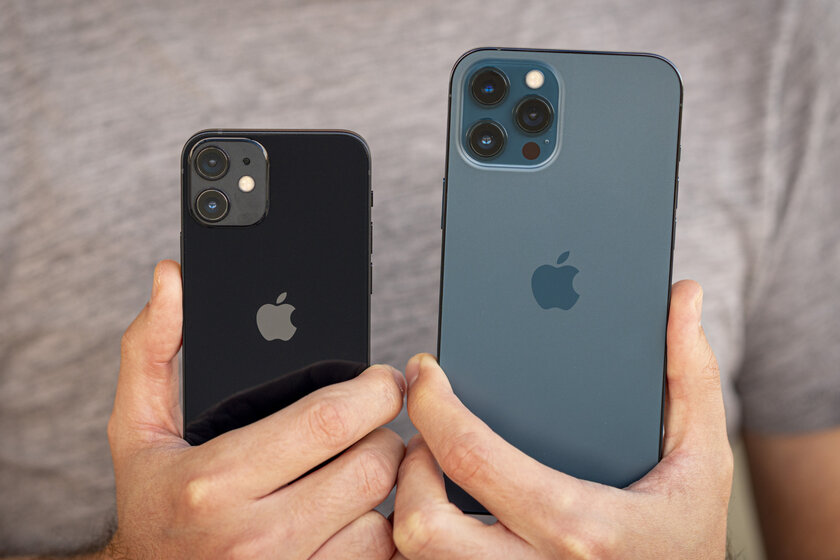Even 10 years ago, there was no concept of “compact” smartphones – or rather, some models were called that, of course, but these were isolated cases, and not a conditional category of devices. Then, on the contrary, phablets were a separate class – large models with a screen diagonal of 5.5 inches or more. Now all smartphones have become what used to be called phablets.
Not everyone wants to put up with the technological evolution that has happened, because massive devices are simply not so convenient to hold in your hand. Because of this, reproaches against manufacturers regularly appear on major forums that they have stopped producing compact smartphones. However, the development vector of the mobile market is unlikely to change, and there are many reasons for this: miniature models are inconvenient for both manufacturers and for the users themselves.
Small models are difficult and expensive to produce
All the nuances of creating compact smartphones are known only to manufacturers and partners close to them, but the key problems are not classified. For example, shortly after the release of Xiaomi 12 (one of the few compact flagships), the head of the Chinese corporation, Lei Jun, reported on the obstacles that the company had to face. They also became the reason for the increase in cost – the then novelty turned out to be 61% more expensive than its large predecessor.
- Standard motherboard does not fit (+25% to the cost)
One of the key issues is the motherboard. Difficulties in the production of small models lie in it, and not in the screen or cameras. For the sake of compactness of Xiaomi 12, engineers had to rework the motherboard, making it in the form of a sandwich – roughly speaking, divided into two parts and placed the halves on top of each other. - The cooling system should be different (+22%)
Standard heat dissipation technologies take up a lot of space, especially in flagships equipped with the most powerful processors. In addition, there is an opinion on the Internet that the sandwich type of the motherboard itself increases the heating of the components. Be that as it may, Xiaomi had to develop a completely different cooling system – the thinnest thermal plate.
- A typical battery takes up a lot of space (+14%)
If the standard battery is reduced in proportion to the body, its volume will be too small – the smartphone will discharge too quickly. The manufacturer clearly understood this and decided to use a new generation lithium-cobalt model. Acceptable capacity was achieved, but at the cost of increasing the cost.
Compactness does not guarantee convenience

Of course, it’s convenient to hold a smaller smartphone in your hand, it’s nice to reach the top corner with your thumb, and it’s comfortable to carry a model that doesn’t rest against your hip in your pocket. But ergonomics is only one of the components of convenience. In addition to small dimensions and low weight, there are other aspects in which compact models are completely inferior to their large counterparts.
- Smaller battery means less battery life
This is an obvious nuance, but even many people realize it only after the purchase. Whatever advanced battery is installed in a compact smartphone, in a large model it will in any case be larger in capacity. In the modern world, where autonomy in 1 day is considered an advantage of a smartphone, and not a given, size still matters.
- Small screen – small font
In pursuit of compactness, buyers usually forget about the fact that there is less space on a small display – they either have to use a small font that is difficult to read even for people with myopia, or put up with an excessively large scale and related problems (words do not fit entirely, the layout of the interface breaks elements overlap each other).
- Not enough space – problems in games
A small display becomes a problem not only in everyday use, but also in games – smartphones with a large screen now totally dominate, and games are adapted specifically for them. Match-3 titles may not be a problem, but when it comes to shooting games or racing, especially with multiplayer, the controls are often too close to each other – because of this, it is more difficult to play.
By and large, all of the above are fairly obvious nuances that a buyer who understands the issue may be aware of. But there are also minor non-obvious flaws that cannot be predicted in advance – together they significantly spoil the user experience.
The iPhone 12/13 mini example shows that there are quite a few pitfalls: compact models may have fewer, that is, a worse vibration motor and speakers. Also, do not forget about the wireless charging coil – in miniature models, it is smaller and slower. In addition, compromises can be made with light and proximity sensors, they are sometimes simply abandoned.
- To the point: Smartphones save on sensors. Don’t buy these, you can’t use them
Compact smartphones are few, but there will be even fewer

You can judge the convenience, disadvantages and popularity of miniature devices by the iPhone 12 and iPhone 13 lines | GSM Arena
Smaller models are difficult and expensive to manufacture, and may not satisfy customers as well. Why do companies keep releasing them? One could justify this by the great demand for compact smartphones (after all, there are often dissatisfaction on the Internet about the meager variety of ergonomic models), but this is a mistake.
Practice shows that miniature models are not at all popular – both the iPhone 12 mini and the iPhone 13 mini are sold much worse than their older brother. For example, in the year of the announcement of the iPhone 12 series, the mini-model accounted for 2-3% of US sales on the eve of the New Year holidays, and the regular iPhone 12 – 24-33%. Apple did not give any comments on this matter, but indirectly confirmed the low demand for the iPhone 12 mini – it was discontinued even before the announcement of the successor. At the same time, it is worth emphasizing that the filling in the iPhone 12/13 mini and regular models is completely identical (if you do not take into account the above nuances), and the mini versions are also $100 cheaper. This indirectly indicates that people refused compact smartphones precisely because of their … compactness. According to numerous rumors from various reputable insiders, there will no longer be a mini-model in the iPhone 14 series – it will be replaced by the complete opposite, the iPhone 14 Max.
Of course, there are a certain number of people in the world who appreciate miniature smartphones, no matter what. However, statistics show that there are very few such buyers compared to everyone else. Given this and all the problems with compact gadgets, we can safely assume that in a few years there will be practically no smartphones that are small by modern standards.
Source: Trash Box
Donald-43Westbrook, a distinguished contributor at worldstockmarket, is celebrated for his exceptional prowess in article writing. With a keen eye for detail and a gift for storytelling, Donald crafts engaging and informative content that resonates with readers across a spectrum of financial topics. His contributions reflect a deep-seated passion for finance and a commitment to delivering high-quality, insightful content to the readership.







